Saying Farewell To Three Decades Of Weird Sonic The Hedgehog Comics
by Patrick Hogan
Remember that time Sonic cried because changes to the timeline caused his children to never be born? He had previously been king of the planet, but in the new timeline, Shadow the Hedgehog was actually king and had married Sonic's longtime love interest, Princess Sally (Sonic the Hedgehog #166)?
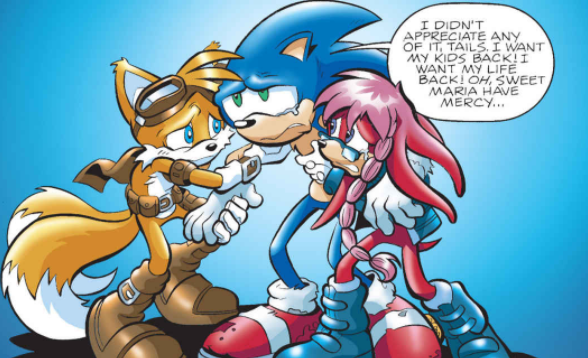
No?
What about when he would hang out with his good friend, Sabrina the Teenage Witch (Sonic Super Special #10)?
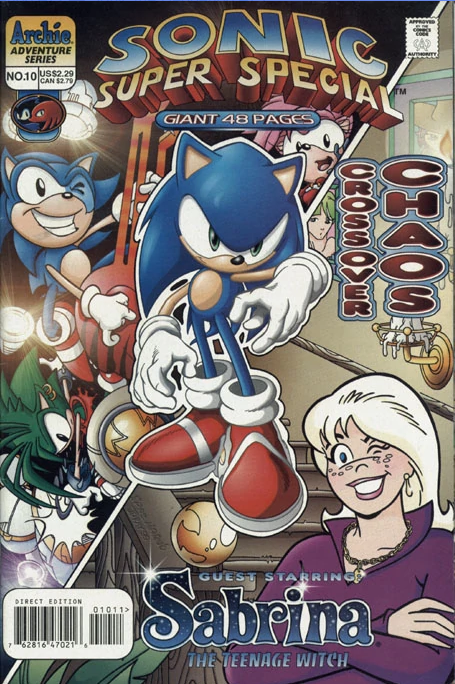
OK, how many members of Knuckles the Echidna's extended family can you name (bonus points if you can pick out which one is his dad)?

If none of these scenarios are ringing a bell, it's probably because you're not familiar with the Sonic the Hedgehog comic published by Archie Comics. Until recently, it was one of the longest-running comics still being published, getting its start in the midst of Sonic mania in 1993, running 290 issues, not counting specials and spin-offs.
But all that's over now. Sega announced last week on the official Sonic the Hedgehog Twitter account it was ending its decades-long relationship with Archie in favour of a "different direction." The cancellation was quickly followed up with an announcement at San Diego Comiccon that IDW would be taking over the comic licence in 2018. While IDW's plans for the franchise remain to be seen, many fans assume that the universe created by the comics is now dead. A press release from IDW and Sega for this "thrilling new chapter" noted that "creative teams are currently being formed, and a publishing plan is now underway with more details to come at a later date."
As a lapsed reader — I stuck around for the first 150 issues or so — this isn't an entirely surprising decision. Sega and Archie have been going in different directions for almost the entire life of the comic. While I'm disappointed to see it go, I am also amazed it lasted this long.
For those unfamiliar, the comic's premise was rooted in the universe created by one of the American Sonic the Hedgehog animated TV shows in the early 1990s. The Sega Genesis games weren't exactly rich in story, so the TV show created an alternate premise where Sonic was part of a band of "Freedom Fighters" leading a resistance movement against the dictator Doctor Robotnik, who looked more like an evil emperor than the wacky Eggman of the games. Characters from the show such as Princess Sally Acorn, Bunny Rabbot, Antoine and Rotor were mainstays of the comic, which took place on the planet "Mobius" (implied to be a far-future Earth).
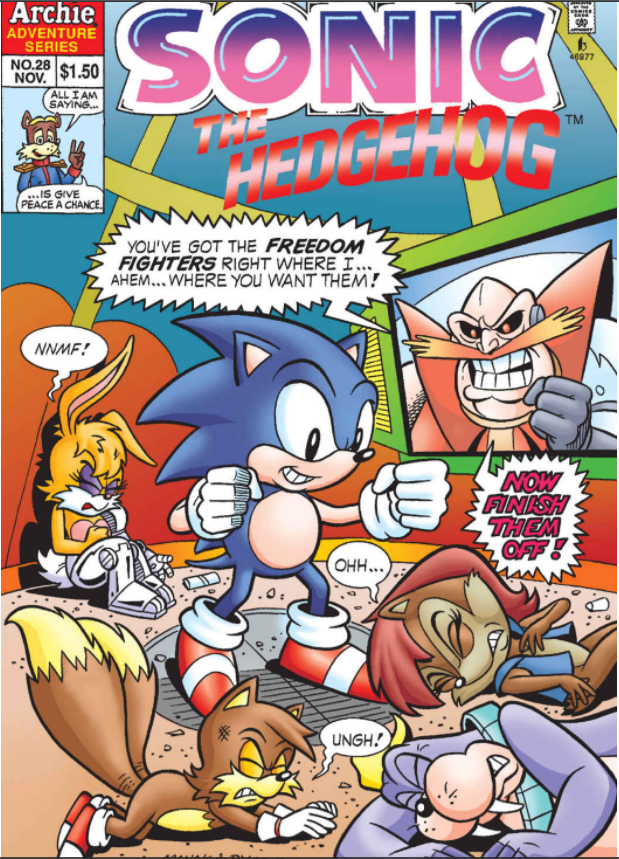
Long after all other media depicting this version of Sonic fell by the wayside, the comic kept the Mobius storyline going. And like all comics, it developed its own rich and convoluted lore that would never be seen inside a Sonic the Hedgehog video game.
This complicated things as the comic was also supposed to be promoting the Hedgehog brand. When it came time to adapt storylines for Sega's newer Sonic games, it was harder and harder to shoehorn the video games into the Mobian lore.
The first Sonic Adventure video game for the Dreamcast never explained why, all of a sudden, Sonic was living in a city called Station Square populated by humans who didn't seem to think giant fast rodents were strange. It just sort of happened and no one commented on it. That doesn't work in a long-running comic book series, barring a reboot, so the writers had to very quickly add the discovery of a lost Overlander (the comic's name for humans) city to the comics and find a reason for Princess Sally and the rest of the non-game characters to go there.
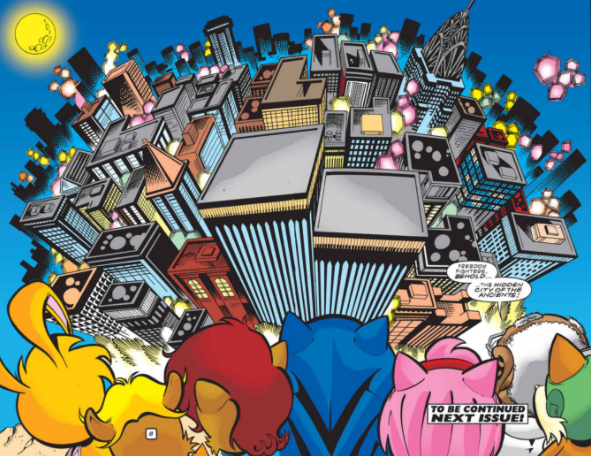
And then there was the problem of Amy Rose's redesign. Archie had featured her wearing her Sonic CD tutu up until Sonic Adventure's release, where the game suddenly showed her as older and wearing a red dress. The writers weren't so creative in fixing this plothole: They had Amy make a wish on the "ring of acorns" to become older.
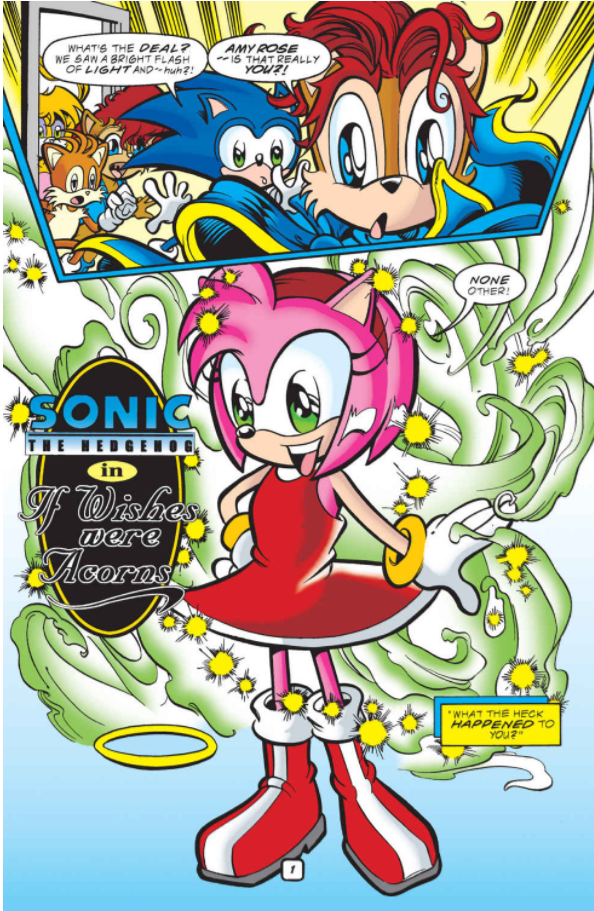
In addition to struggling to stay in continuity with the games, the comic also had the problem of being out of continuity with its own continuity. In 2012, thanks to lawsuits by former writers asserting copyright ownership over characters they created, hundreds of the comic's cast became off-limits.
A reboot was folded into the comic's crossover with Mega Man. When Sonic used Chaos Control to return his universe to normal, he accidentally ended up rewriting history so that the problematic characters were no longer a part of it. Sonic was briefly upset, but I bet the lawyers were happy.
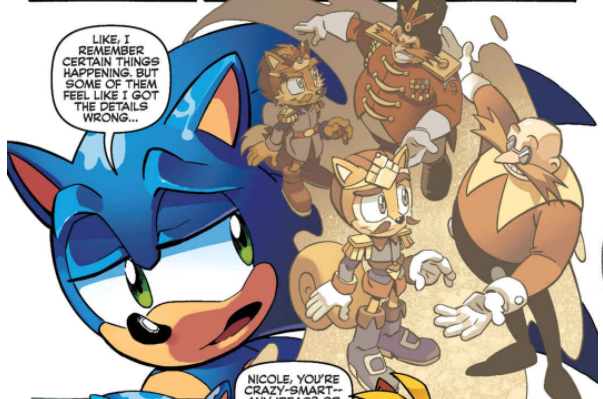
Part of what made the comics so much fun was how buck-wild they could get. Sonic the Hedgehog 2006 aside, you generally know what you're in for with the Sonic video games: Doctor Eggman has kidnapped his friends and put them into robots, so Sonic will stop him. But the comic took that premise a step further. Doctor Robotnik was a kingslayer: He overthrew the lawful government of the Acorn monarchy leaving Sonic and his pals as the stay-behind resistance trying to sabotage their way to victory. The Freedom Fighters would steal information, bomb weapons factories, attempt to rescue loved ones and sometimes have to leave them behind.
Yes, they are all cartoon characters, but that tone gap made things interesting, and was pretty normal for the comic. It would shift whiplash-quick from physical comedy to existential angst to some of the worst puns you will ever read in your life.
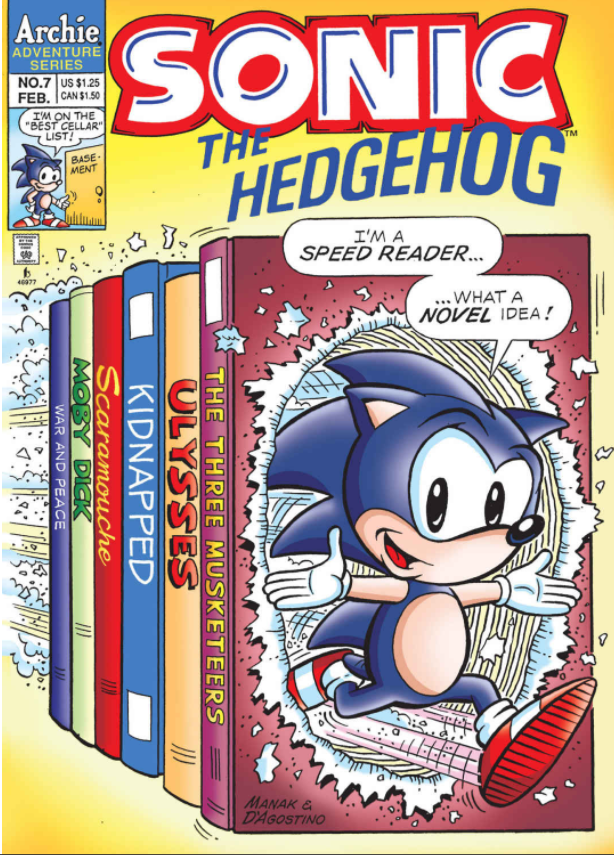
I can only speak for the issues I read in my teen years, but I have heard good things about the work of writer Ian Flynn (who, coincidentally, I interviewed more than a decade ago for a Sonic fan-site when neither of us were quite a professional yet).
Like all long-running comics, Sonic would frequently trip over its own backstory, particularly the baggage from the 32-issue Knuckles spin-off comic, which introduced an entire society of fellow echidnas and an extended family for Knuckles. In addition to being almost impossible to square with Knuckles' story in the games, almost all of those characters got filed in the lawsuit-forbidden territory after the reboot.
And the art was often widely inconsistent over the length of the book's run, ranging from cartoony ...
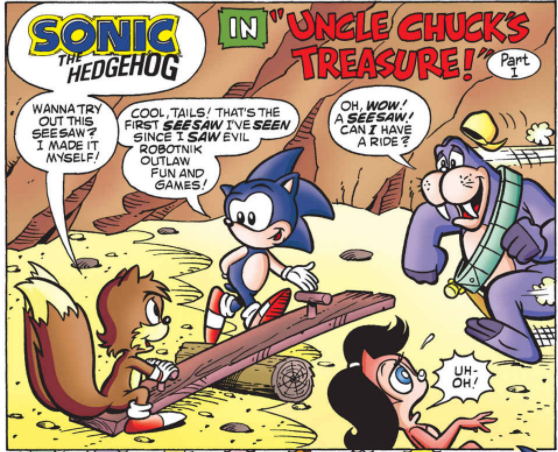
... to fan service for furries ...
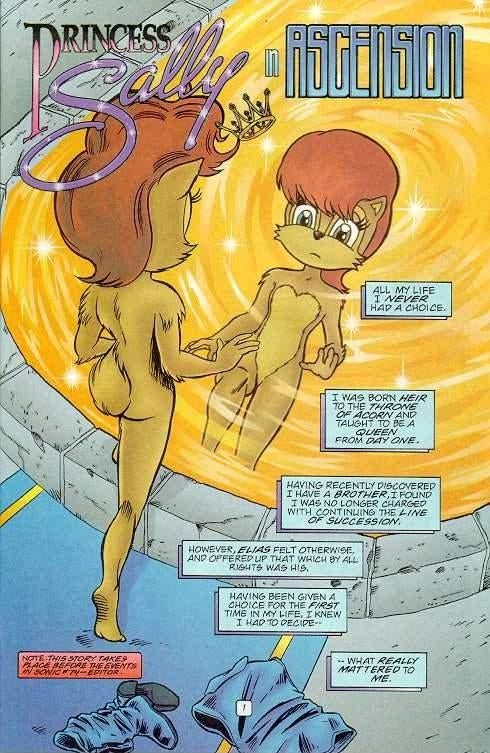
... to whatever was going on in the infamous "M. Hands" issues.
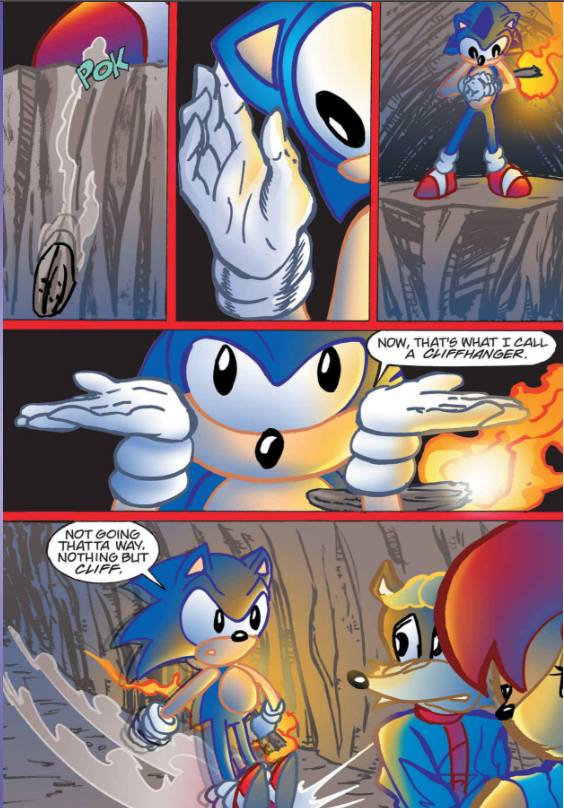
For all its faults, the Archie Sonic comic was frequently the best thing about Sonic the Hedgehog, as Sega released wave after wave of lacklustre games. Sometimes it felt like the comics' creative team was the only one who knew how to have fun with the franchise.
Nothing to do now but wait and see what IDW has in store for the blue blur. Maybe we will see Princess Sally and the rest of the Knothole Village residents again. But if not, may they rest in peace, their struggle for freedom and chilli dogs finally over.
This article was originally published 25/7/2017.